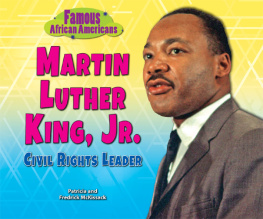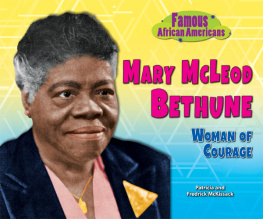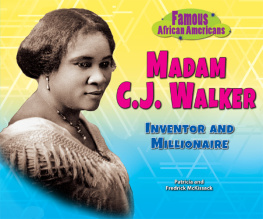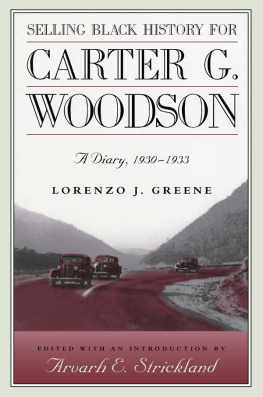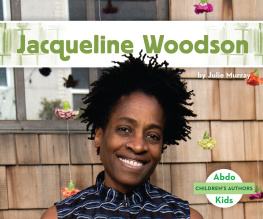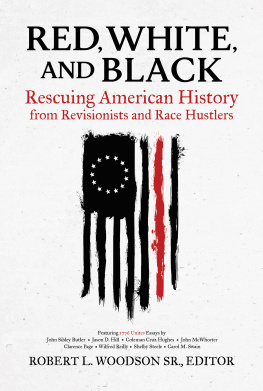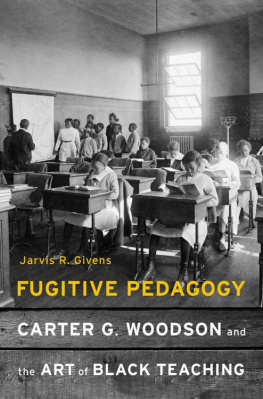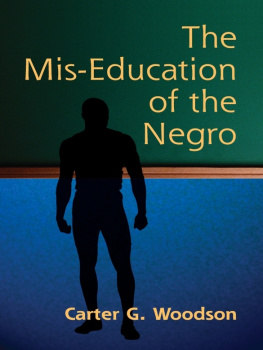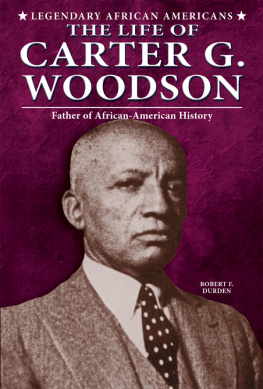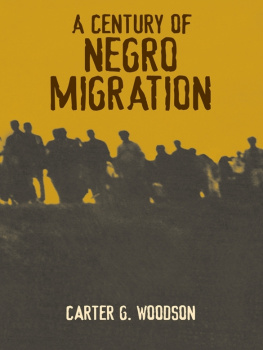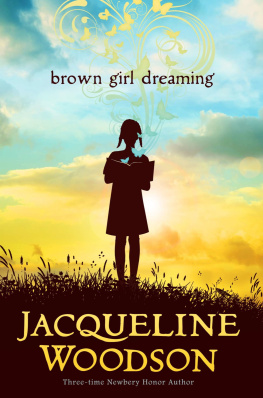NEVER TOO LATE TO LEARN
CARTER G. WOODSON BELIEVED THAT IT WAS NEVER TOO LATE TO LEARN. AFTER HE FINISHED SCHOOL, HE BECAME A TEACHER AND HELPED STUDENTS LEARN ABOUT IMPORTANT AFRICAN-AMERICAN LEADERS. READ ABOUT CARTERS LIFE IN THE FAMOUS AFRICAN AMERICANS SERIES.
ABOUT THE AUTHORS

Patricia and Fredrick McKissack have written over one hundred books about the African-American experience. They have won countless awardsincluding the Coretta Scott King Awardand received much critical acclaim, all the while bringing enjoyment and information to young readers.

Image Credit: Moorland-Spingarn Research Center, Howard University
Carter Woodsons parents were slaves. He spent much of his life teaching others about black history.
The first history lessons Carter Woodson learned were about his own family. His mother, Anne Eliza Riddle, was born a slave. She told stories about her life.
Carters father told him stories, too. James Henry Woodson was also born a slave. His master beat him all the time.
One day James took the whip away from his master and beat him with it. A group of men came to kill James. But he ran and hid in the woods for many, many days.
It was near the end of the Civil War. Soldiers from the North were in Virginia. They found James in the woods. They told him he was free. James soon joined the Union Army.
The war ended in April 1865. Soon after, James and Anne met and married. They moved to Huntington, West Virginia.
In 1874 they moved back to New Canton, Virginia. They bought a small farm. Carter Godwin Woodson was born there on December 19, 1875.

Image Credit: Ned O.
When the Union soldiers found Carters father, they told him that he would no longer be a slave. He was free!

Image Credit: Ned O.
Carter learned how to read even though he could not go to school very often.
Carters father couldnt read or write. But he always told his seven children, It is never too late to learn.
Carter had to help out on the family farm. There wasnt much time for school. Still he learned how to read. He read every day.
When Carter was sixteen years old, he went to West Virginia with his older brothers. There he worked on the railroad and in a coal mine.
By 1893, Anne and James had moved back to Huntington, West Virginia. Carter had two younger sisters. They wanted to go to Douglass High School. Carter wanted to go there, too.
But he was eighteen years old. It is never too late to learn, he told the principal.

Image Credit: Ned O.
As a high school principal, Carter taught his students the importance of reading and learning.
Carter had learned a lot on his own. He did very well on a test. So they let Carter start at Douglass High School. Then he surprised everyone when he graduated eighteen months later.
Next Carter went to college. After a few months, he was asked to be the principal of a school. He had that job for two years. In the summers, he went to school.
In 1900, Carter was asked to be the principal of Douglass High School back in Huntington. He was proud to take the job. He stayed there three years.
Carter read every day. He tried to learn something new every day. He read to his students. And he always told them, It is never too late to learn.
In August 31, 1903, a letter came for Carter. He had been asked to come teach in the Philippine Islands. His work began on December 19, 1903.
Something was wrong. The children werent learning. They didnt like to read. The other teachers said the children were lazy. Or their mothers and fathers didnt care. Carter wouldnt stop trying.
One day he sang a song for his students: Come Shake the Apple Tree. But apples dont grow in the Philippines! So Carter changed the words to Come Shake the Lomboy Tree. A lomboy is a kind of plum. The children loved the song. They wanted to learn it. And they did.

Image Credit: Library of Congress, Prints & Photographs Division
In the Philippines, Carter taught children like those shown here. The hut behind them is their classroom.

Image Credit: Ned O.
As a teacher, Carter found ways to make his students interested in their lessons.
Carter learned Spanish. He taught the children about their own history and heroes. The children were proud of who they were. Soon they were reading and learning quickly.
After that, Carter put away the books. They were written for American children.
Carter thought about the school books back home. They didnt have much black history in them. Carter wrote home. It is time to Come Shake the Lomboy Tree in American schools.

Image Credit: Moorland-Spingarn Research Center, Howard University
Carter Woodson liked to look his best. He never married.
Each summer Carter came home. He studied history at the University of Chicago. He came home for good in 1908. He needed to learn more. So he went to the University of Chicago. He graduated in March. He continued his studies and earned a higher degree in August of that same year.
Then Woodson went to Harvard University in Massachusetts. There he worked on the highest degree a student can earna Ph.D. He received his Ph.D. in history in 1912. With that degree, he was called Dr. Woodson.
Dr. Woodson took a job at M Street High School in Washington, D.C. There he taught history, French, and Spanish.
History books still didnt have much about black people in them. We must teach ourselves, he said. At his school, black history was taught.
In 1914, Dr. Woodson became a member of the American Negro Academy. The group found and saved African-American writings. They wanted to show that black people had done many important things in history.
Dr. Woodson started the Association for the Study of Negro Life and History in 1915. We will teach ourselves about ourselves, he said.


